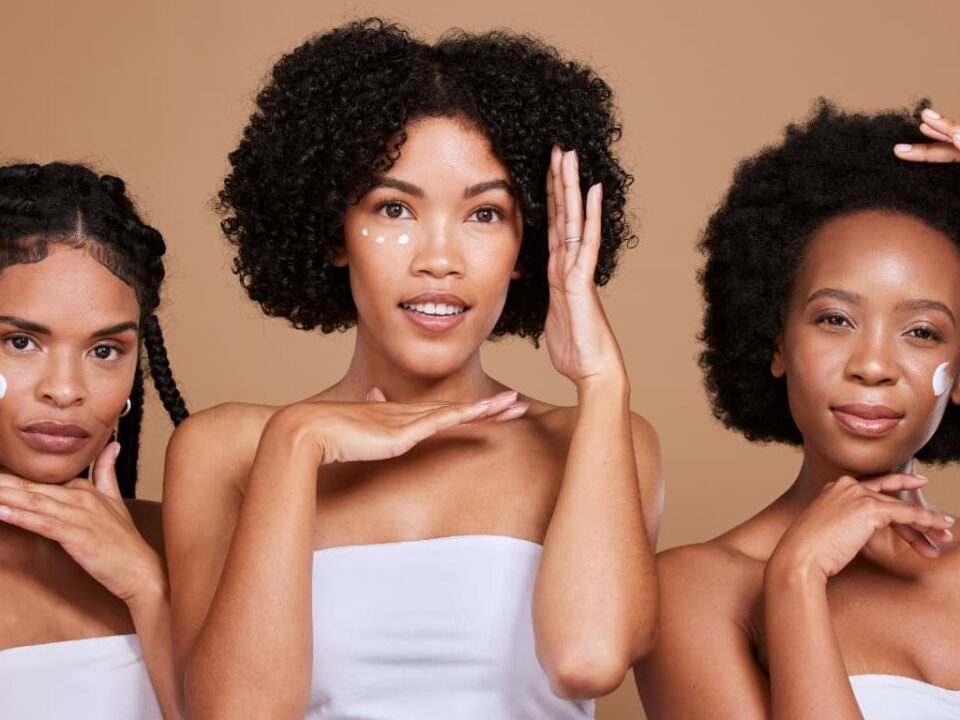
More Than Just a Face: The Untold History of Black Women, Beauty, and the Battle for Power and Protection
March 29, 2025The Hidden Threat to Fertility and Health: The Impact of Environmental Contaminants on Black Women’s Reproductive Health
April 12, 2025Endocrine Disruptors: The Hidden Threat to Black Women’s Reproductive Health
At *Melanin In Balance, our mission began with a personal wake-up call: *Why are so many Black women silently struggling with reproductive health issues like fibroids, infertility, and hormone imbalances?
As we peeled back the layers, one answer became disturbingly clear: Endocrine disruptors—a class of chemicals hiding in our everyday beauty, personal care, and household products—are quietly harming our health.
This blog is the beginning of a conversation we all need to have.
What Are Endocrine Disruptors?
Endocrine disruptors (EDCs) are chemicals that interfere with the body’s hormone systems. They can mimic or block natural hormones, disrupting everything from your menstrual cycle to fertility, pregnancy, and mood.
These harmful chemicals are commonly found in:
- Hair relaxers and straighteners
- Skin lightening creams
- Plastic containers
- Perfumes and fragranced lotions
- Cleaning products
- Makeup, deodorants, and even pads and tampons
Common EDCs include *parabens, **phthalates, **BPA, **formaldehyde, *triclosan, and synthetic fragrance compounds.
Why This Matters: The Dangers of EDCs
Our hormones regulate the body’s most vital systems. When disrupted, the effects can be serious—especially for women.
Linked health issues include:
- Uterine fibroids
- PCOS (Polycystic Ovary Syndrome)
- Endometriosis
- Infertility and pregnancy loss
- Early puberty
- Thyroid disorders
- Hormone-related cancers like breast and uterine cancer
A Disproportionate Impact on Black Women
Black women are exposed to higher levels of EDCs—not by chance, but by design.
- Products marketed to Black women are more likely to contain hormone-disrupting chemicals.
- A 2018 study in Environmental Research found that hair products used predominantly by Black women contained more endocrine-disrupting compounds.
- The NIH reports that 80% of Black women will develop fibroids by age 50, compared to about 70% of white women—and we develop them earlier, larger, and more aggressively.
- Black women face a *higher risk of infertility, yet are *less likely to be diagnosed or offered treatment.
- We also experience early puberty at higher rates, a trend increasingly tied to chemical exposure.
These aren’t isolated experiences—they’re part of a larger public health crisis.
The Beauty Industry and Black Women: A Complicated History
Our relationship with beauty products goes deep.
From the days of Madam C.J. Walker—America’s first Black female millionaire who revolutionized Black haircare—to the rise of beauty supply stores in Black communities, we’ve always shaped, innovated, and influenced the beauty industry.
But the industry hasn’t always served us well.
For decades, we’ve been sold products promising straighter hair, lighter skin, or tighter curls—many of them packed with harmful chemicals. Our beauty routines have become battlegrounds for our health, with little regulation or transparency to protect us.
Influencer Culture and the Rise of the Clean Beauty Movement
Black influencers and creators are the blueprint.
We dominate TikTok and Instagram with beauty tips, product reviews, and tutorials. Yet the clean beauty conversation often leaves us out. It’s time we demand more from brands and stop normalizing harmful products in our routines.
It’s not just about aesthetics—it’s about survival.
Black Spending Power: We Move the Market
Black consumers, especially Black women, are a powerful economic force. In the U.S. alone, Black buying power reached $1.8 trillion in 2023—and a huge portion of that goes into beauty and personal care.
We:
- Spend 9 times more on ethnic hair care than non-Black consumers
- Lead trends that shape the entire industry
- Still lack representation and protection when it comes to product safety
Imagine the impact we can make when we redirect our dollars toward brands that protect our health.
Why We Started Melanin In Balance
We started this platform because we were tired—tired of the silence, the normalizing of pain, and the toxic products marketed to us as “solutions.”
Melanin In Balance is about:
- Education—because knowledge is our first defense
- Empowerment—because your voice and choices matter
- Healing—because our bodies deserve care, not harm
Our goal is to protect, uplift, and inform Black women on the path to hormonal balance and reproductive freedom.
What You Can Do Now
Start small. Take back control.
Here are a few ways to reduce your exposure to endocrine disruptors:
- Read ingredient labels—avoid “fragrance,” parabens, phthalates, and sulfates
- Choose natural alternatives for haircare, skincare, and hygiene
- Store food in glass, not plastic
- Limit use of heavily scented products
- Support brands prioritizing clean, inclusive products
- Stay informed and share knowledge with your circle
This Is Just the Beginning
This issue is deeper than products—it’s about justice, agency, and the right to be healthy in the bodies we were born with. It’s time to protect our wombs, our hormones, and our future.
At Melanin In Balance, we’re building a safe space for Black women to unlearn, heal, and thrive.
Let’s get in balance—together.
Sources & Research
EWG Skin Deep Database
Environmental Research: “Racial/Ethnic Differences in Hair Product Use” (2018)
American Journal of Epidemiology: “Hair Relaxers and Risk of Uterine Fibroids”
National Institutes of Health: “Uterine Fibroids Fact Sheet”
Journal of Clinical Endocrinology & Metabolism: “Endocrine-Disrupting Chemicals and Women’s Health”
Nielsen Report: “Black Impact: Consumer Spending Trends”


